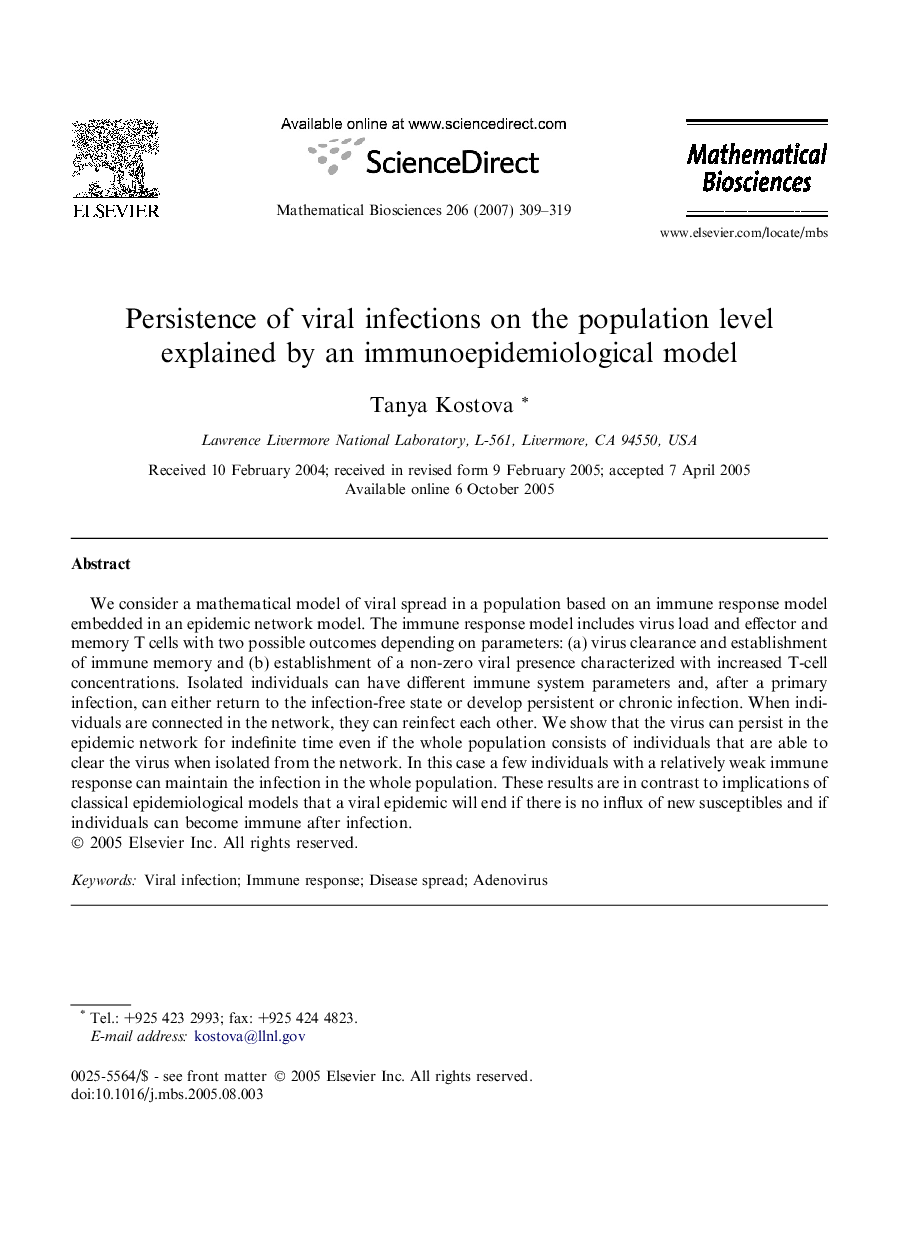| Article ID | Journal | Published Year | Pages | File Type |
|---|---|---|---|---|
| 4501000 | Mathematical Biosciences | 2007 | 11 Pages |
We consider a mathematical model of viral spread in a population based on an immune response model embedded in an epidemic network model. The immune response model includes virus load and effector and memory T cells with two possible outcomes depending on parameters: (a) virus clearance and establishment of immune memory and (b) establishment of a non-zero viral presence characterized with increased T-cell concentrations. Isolated individuals can have different immune system parameters and, after a primary infection, can either return to the infection-free state or develop persistent or chronic infection. When individuals are connected in the network, they can reinfect each other. We show that the virus can persist in the epidemic network for indefinite time even if the whole population consists of individuals that are able to clear the virus when isolated from the network. In this case a few individuals with a relatively weak immune response can maintain the infection in the whole population. These results are in contrast to implications of classical epidemiological models that a viral epidemic will end if there is no influx of new susceptibles and if individuals can become immune after infection.
